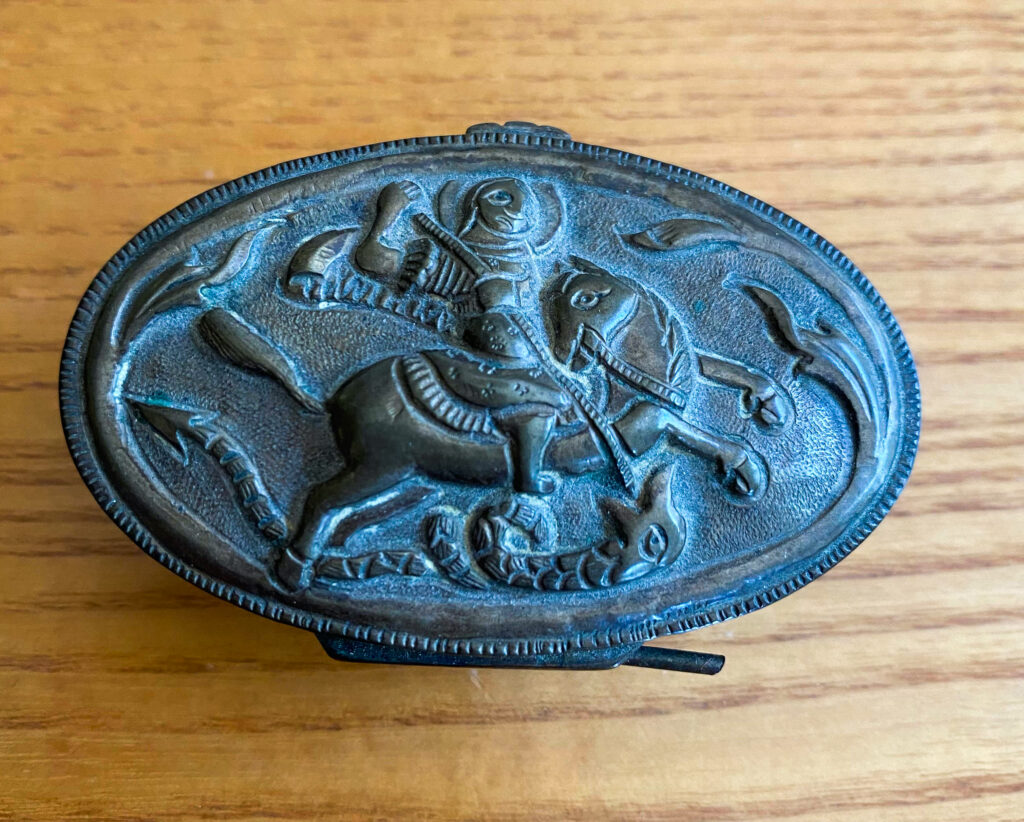
Even though she had already sold most of her valuables to help her husband flee to Greece, Elisavet Alsanoglou still managed to bring with her a few objects which carried significant emotional or practical value. Eventually, what was handed down to her daughter, Maria, was a sewing machine, some kilim rugs, and a small silver box with the icon of Agios Georgios. These objects are today in the possession of Elisavet’s granddaughter, Martha Karpozilou.

Alexandros Oustampasidis and Anastasios Polychroniadis received a special permit from the Revolutionary Government and the Ministry of Hygiene allowing them to rent a boat and sail from Thessaloniki in order to reunite the refugees originating from the wider area of Amisos and assist with their resettlement in Macedonia. During one of these trips, Anastasios Polychroniadis was finally able to reunite with his own family, his wife, and his two children and they all returned to Thessaloniki. His wife, Elisavet Alsanoglou, brought with her this sewing machine.
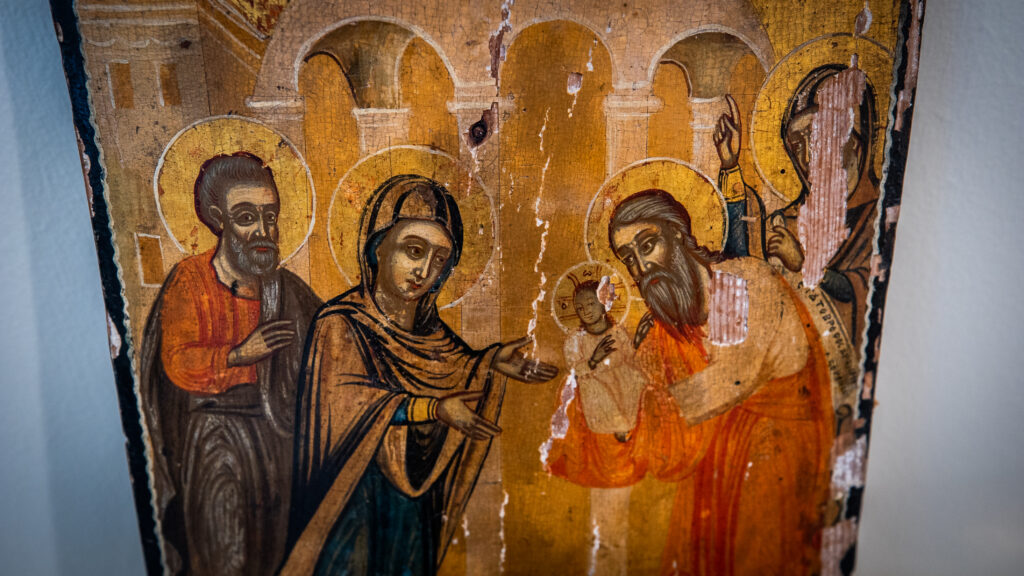
Pinelopi Kouvala brought many religious icons to Greece from Myriofyto, even some of substantial size. She donated most of them to a small monastery run by nuns near the family home in Kalamaria.
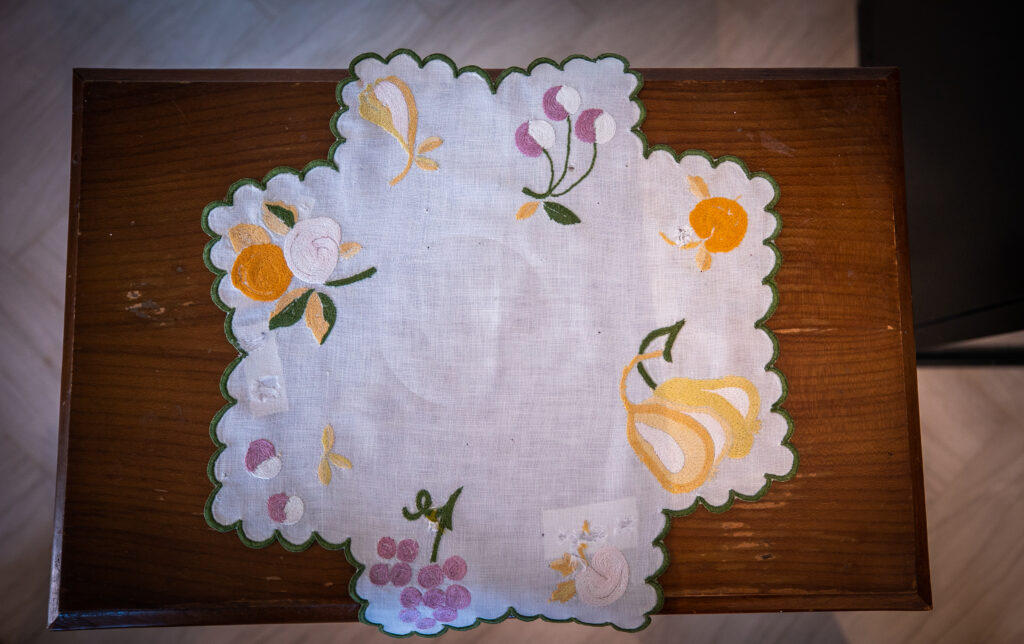
Charoula Panagiotidou has kept objects brought to Greece by her mother’s family, like this piece of white linen fabric with a colourful embroidered border and a small towel with a cross-stitched border, faded and worn with use.
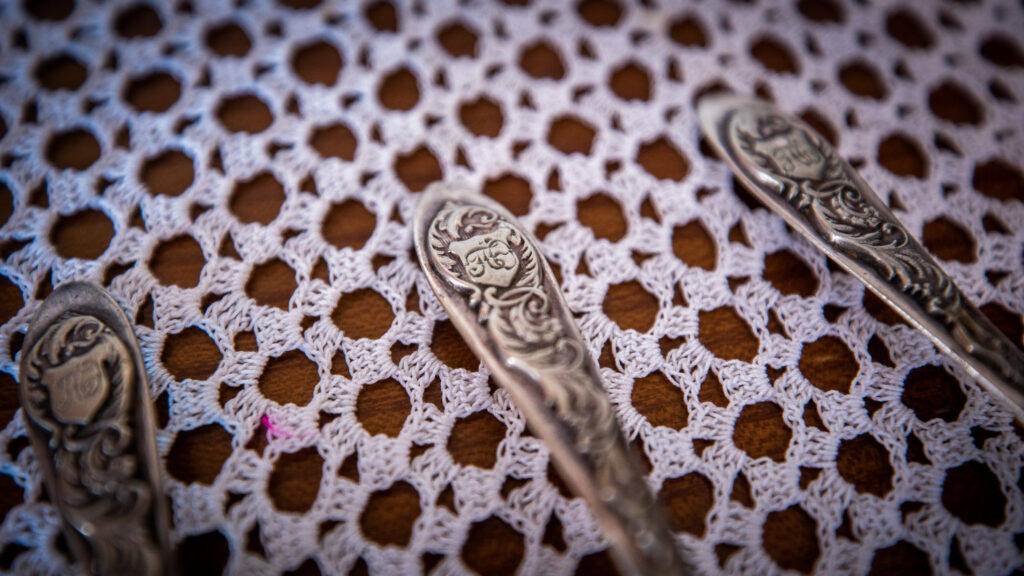
Charoula Panagiotidou has kept objects brought to Greece by her mother’s family. She still uses all of them in her everyday life and shares their stories with her children and grandchildren in an effort to keep the history of her family alive and preserve the memory of the house, the village, and the life they left behind.
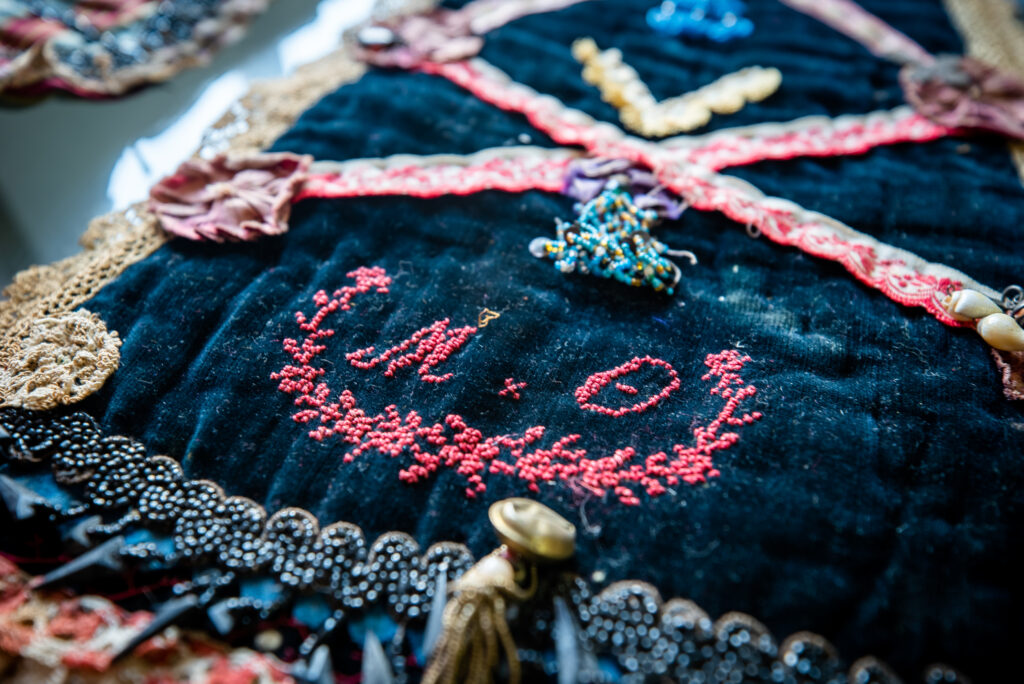
The ‘archaletsi’ could be plain or decorated, adorned with patterns, embroideries, charms, beads or other ornaments. The fact that these shoulder covers were detachable and were worn every day allowed their makers to create elaborate versions that could act as accessories to the traditional women’s outfit which was usually quite conservative in its use of colour and pattern.

The young women of Sinasos went to the water pumps to fill their clay pots with water for everyday household use. To protect the shoulders of their painstakingly constructed outfits from wear, they placed an ‘archaletsi’ over their right shoulder, a handmade cloth cover which they had usually made themselves.
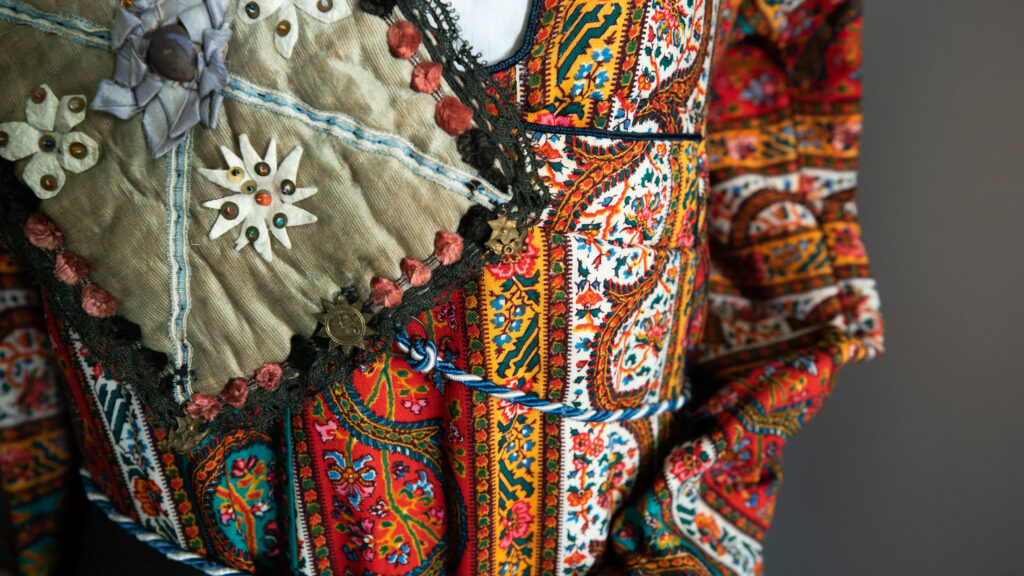
The women of Sinasos did not dance in public spaces, but only during private feasts in their homes and always accompanied by their fathers or husbands. During these feasts or other formal functions and celebrations, they would wear their ‘special’ traditional outfit, their version of formal wear.
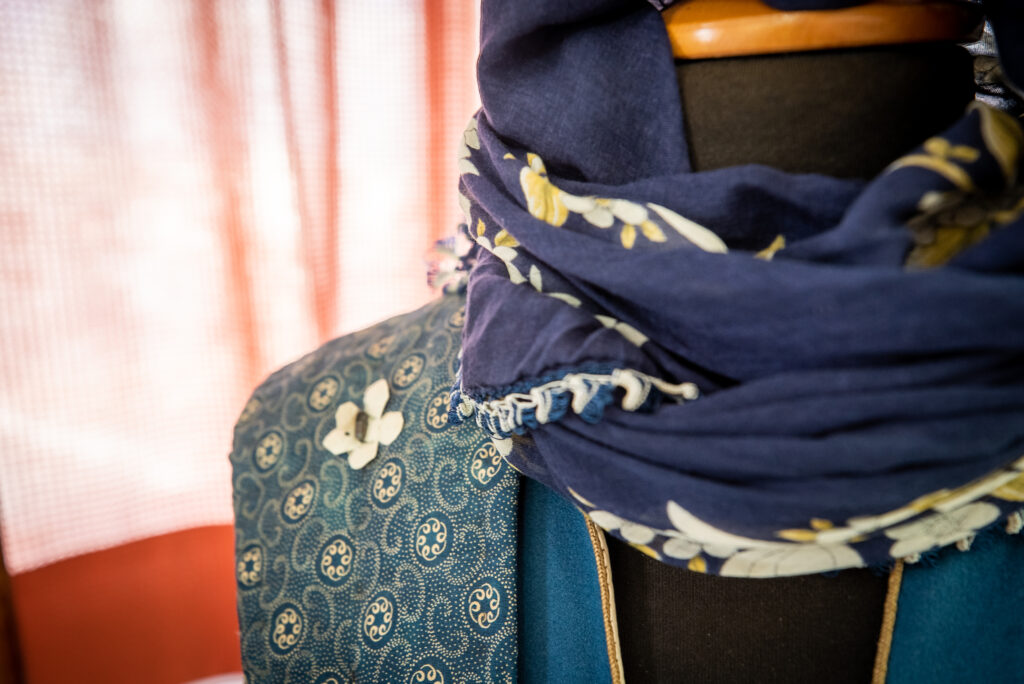
In October 1924, the women of Sinasos brought their traditional outfits with them to Greece, as they considered them highly valuable both from a material and a sentimental standpoint. Some women even wore them during their first years in Greece before they were ‘hidden’ in closets for years to eventually be donated, usually by descendants, to the ‘Nea Sinasos’ Association Museum, where they are still kept to this day.
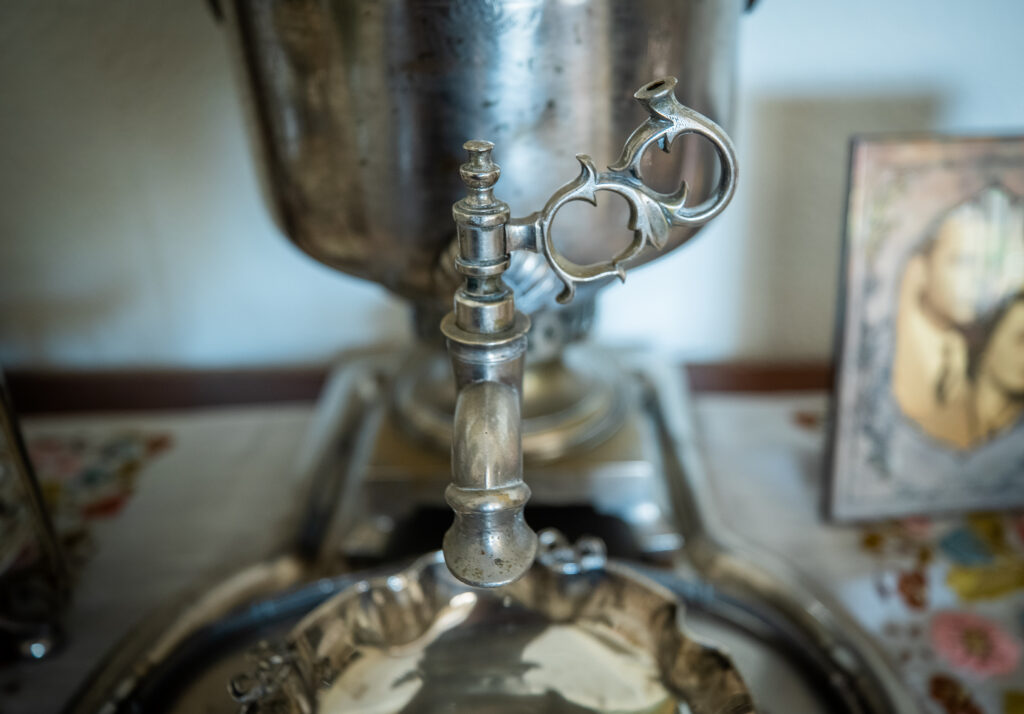
The objects the refugees brought with them from their homelands remained in use for years and later were often repurposed and given new life. The Papadopoulou family from Sourmena, Pontus, brought with them a samovar which they used as a ‘mouslouki’ (a tin water pitcher).









